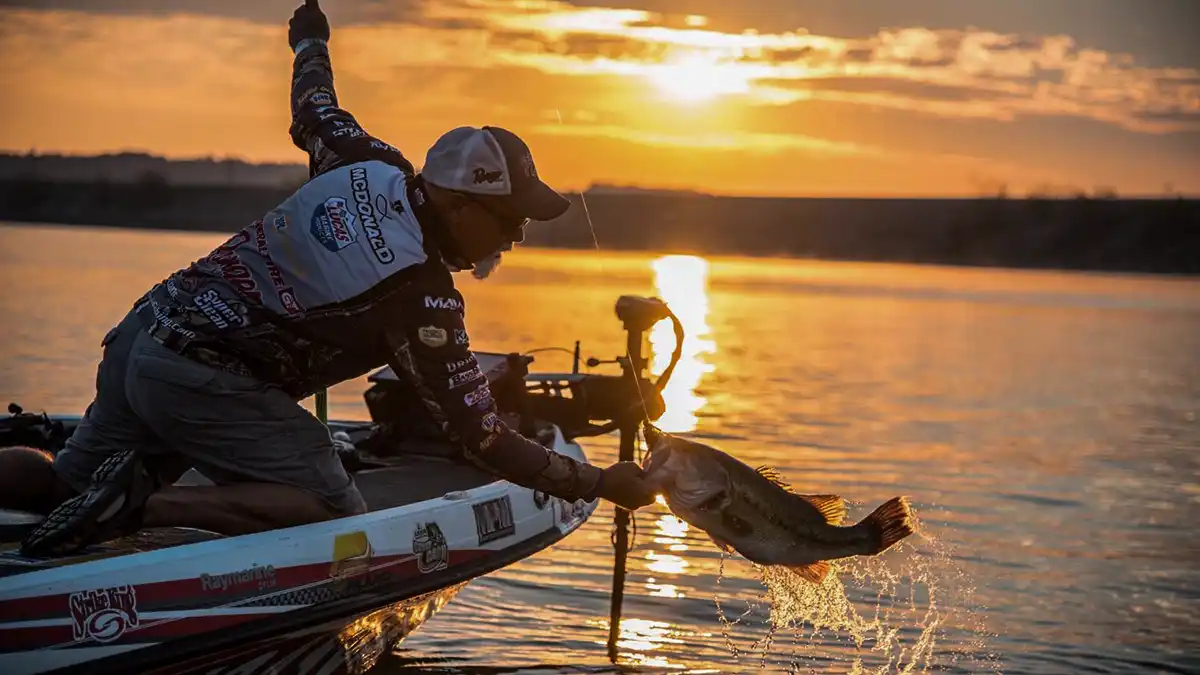As winter melts away and the first few rays of spring dance across the horizon, bass start getting in the mood. We’re staring down the barrel of the prespawn period—at least many of us are. The move is a few weeks out still for some further north. But for the majority of the bass fishing world, the bass are bulging and making their way towards bedding areas.
As the bass start the transition from deep to shallow, they continue to feed heavily, bulking up for the rigorous bedding process ahead. This is one of the best times of the year to find the biggest bass grouped up and aggressive. But, it does take a little searching to find them.
We sat down with long time pro Bill McDonald to talk about the ins and outs of two of the greatest prespawn search baits of all-time— lipless crankbaits and vibrating jigs.
Cover photo by Garrick Dixon
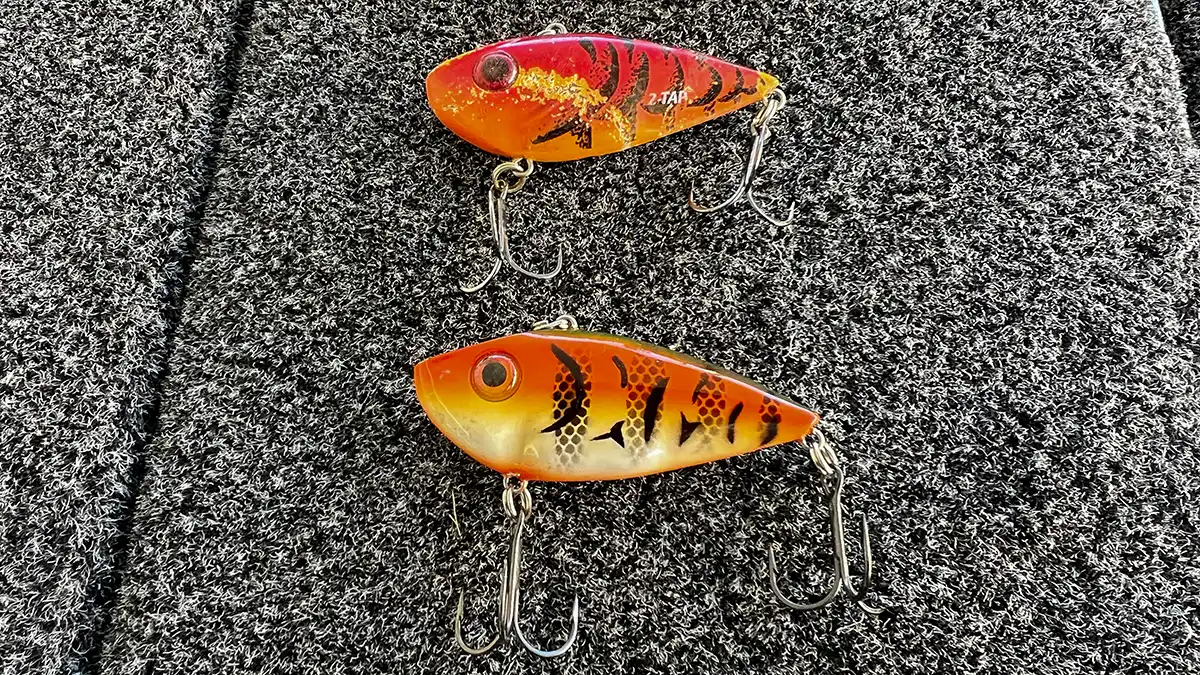
PICK TWO BAITS
“If I’m going pre-spawn and I’m picking one color in the Strike King Red Eye Shad it would be some type of a red color. And I’d go back and forth between a standard Red Eye Shad and the Two Tap Red Eye Shad, which has kind of like a hard knock thumper on the inside of it.”
Pressed to pick only one size in the lipless crank for pre-spawn bassin’, McDonald went with a 1/2-ounce. But he wouldn’t waiver from keeping both rattle variations on hand.
“You gotta let the fish tell you how they want it. Sometimes they’ll just react better to that single knocker as compared to more of that bb type knock.”
Adding his thoughts on a good do-all version of a vibrating jig, McDonald again went with a 1/2-ounce in the Strike King Thunder Cricket, stating that this size can be fished throughout the portion of the water column bass stage in during the pre-spawn.
“You can take green pumpkin from Florida to New York to Texas and catch them on it. I’ll vary back and forth depending on how the bite goes between the tungsten one and the standard one.”
McDonald has worked with Strike King for years, and he’s become intimately aware of the subtle differences between variations of the company’s baits.
“The tungsten has a little bit smaller profile and it has a little different thump to it. You’ve got to play with those to see which one will get the better bite.”
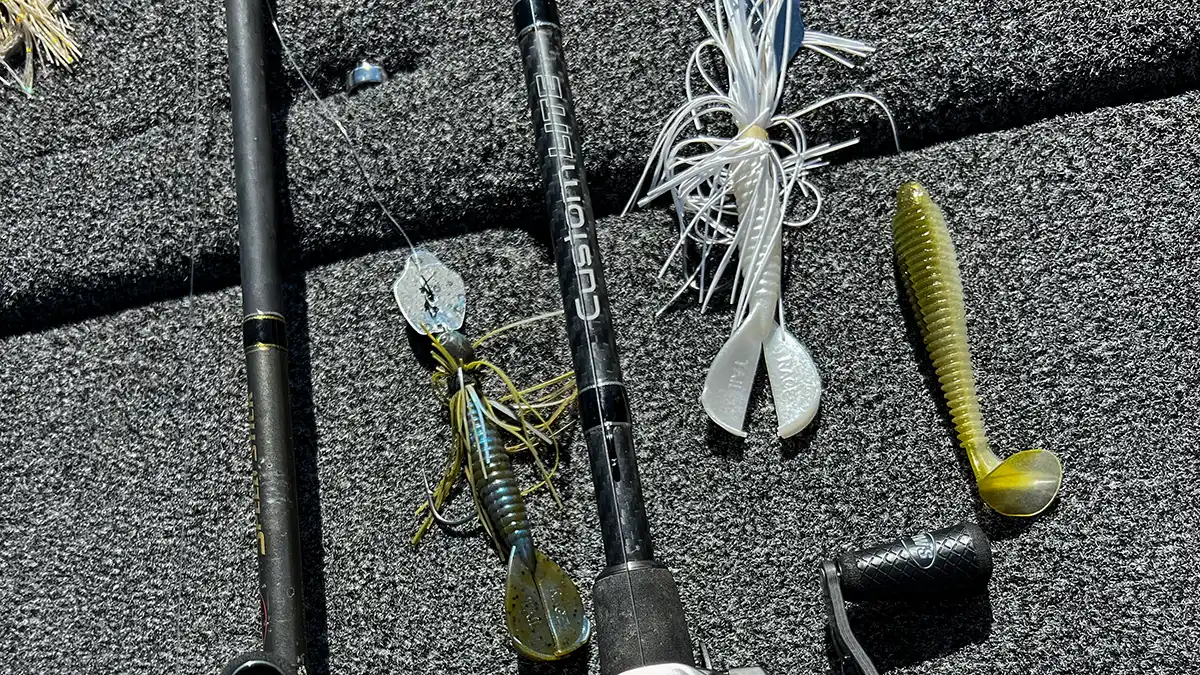
FISHING AT DIFFERENT DEPTHS
As for the baits McDonald will use for trailers on his vibrating jigs, he has a fairly simplistic approach that employs one of two baits.
“Depending on the size of the fish and the cover, a lot of times I’ll throw a Strike King Menace on the back of those. And if I’m fishing somewhere that I think they’ve got bigger shad or quite a bit bigger fish, then I’ll go ahead and put a 3.75-inch (Strike King) Rage Swimmer on the back of it.”
McDonald stressed the importance of the retrieve when it comes to fishing a vibrating jig, being sure to vary the speed of the retrieve based on the depth you’re fishing. He also added a little known tip on how to get the bait deeper.
“If you’re fishing grass and that grass might be a little bit deeper, or if you’re wanting that bait to go a little bit deeper, rip some of the skirt off of it. The more skirt, the higher it’ll ride in the water column; the less skirt, the lower it’ll ride in the water column.”
With both bait types, McDonald added a note on the position of your rod. Holding the rod tip high in the air will help the baits clear cover and stay high in the water column. Dropping the rod tip closer to the water will allow the baits to get considerably deeper, without having to slow the retrieve.
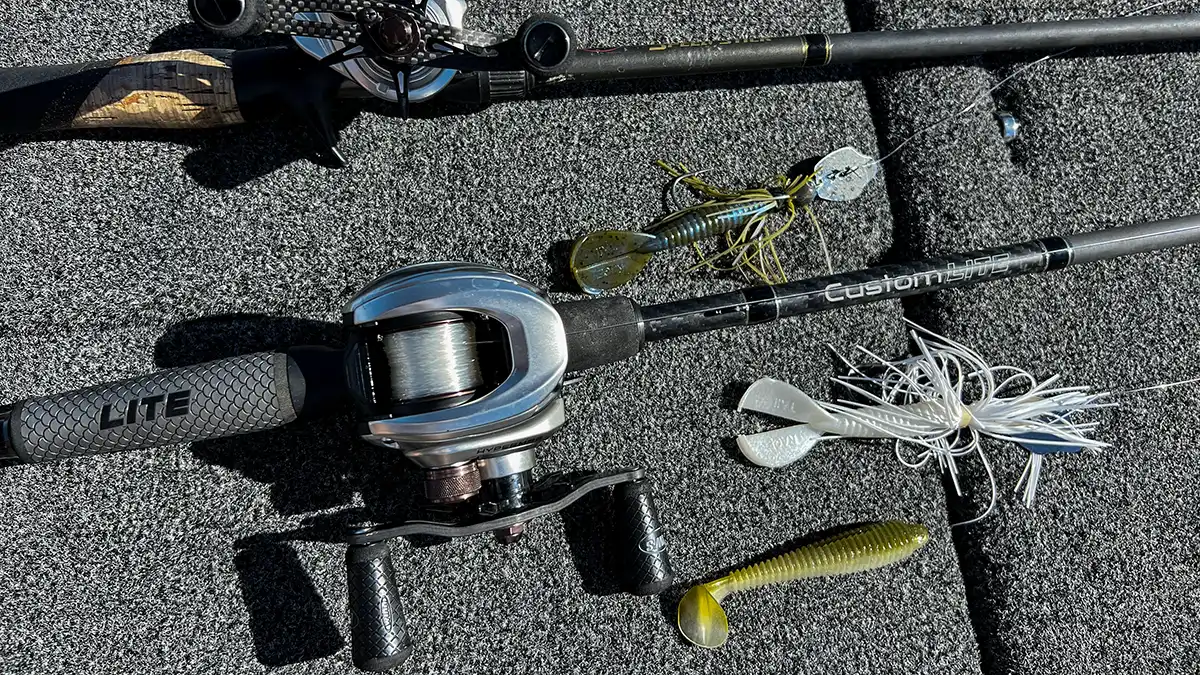
ROD, REEL AND LINE SELECTION MATTERS
“If I’m picking one reel, it would be a 7.5:1. A lot of times I’ll throw an 8.3:1, just because that’s what I like. But if I was picking one reel overall, it would probably be the 7.5:1.”
The reason for McDonald’s recommendation here is again versatility. With a 7.5:1 reel, you can slow a bait down and speed it up to adjust the retrieve and depth of the presentation. With an 8.3:1 reel, it would take a lot more concentration to fish a bait slow.
“I think the biggest problem a lot of people do is they fish it (Thunder Cricket) too fast, especially in a pre-spawn situation. A lot of times you can slow that bait down and fish it really slow and catch a few more fish than what the normal guy in front of you is catching.”
As for a good rod selection to use with both baits, McDonald likes an old-school favorite of his, the Lew’s Custom Lite Magnum Bass Casting Rod.
“We have a bladed jig rod, which can work for both. And it’s also a dynamite spinnerbait rod and topwater rod as well. It’s a 7-foot medium heavy with a fast action. It’s got enough tip to handle it but once you get a big fish on, it’s got enough backbone to hang on to it.”
McDonald’s line selection depends on the fishery, cover, water clarity and size of fish. But he’s always a fan of fluorocarbon over braided lines.
“I do not like braid. That’s a personal preference of mine. I think braid makes a lot different sound in the water. And I think you can get more bites throwing fluorocarbon than you can braid. That’s for both baits.”
“If I’m up in the midwest and the fish aren’t quite as big, I’ll go with a 15 (pound test fluorocarbon). A lot of times I’ll throw straight 17 and if I’m going to Florida or if I’m going to Texas, I’m gonna beef it up and throw 20 on them.”
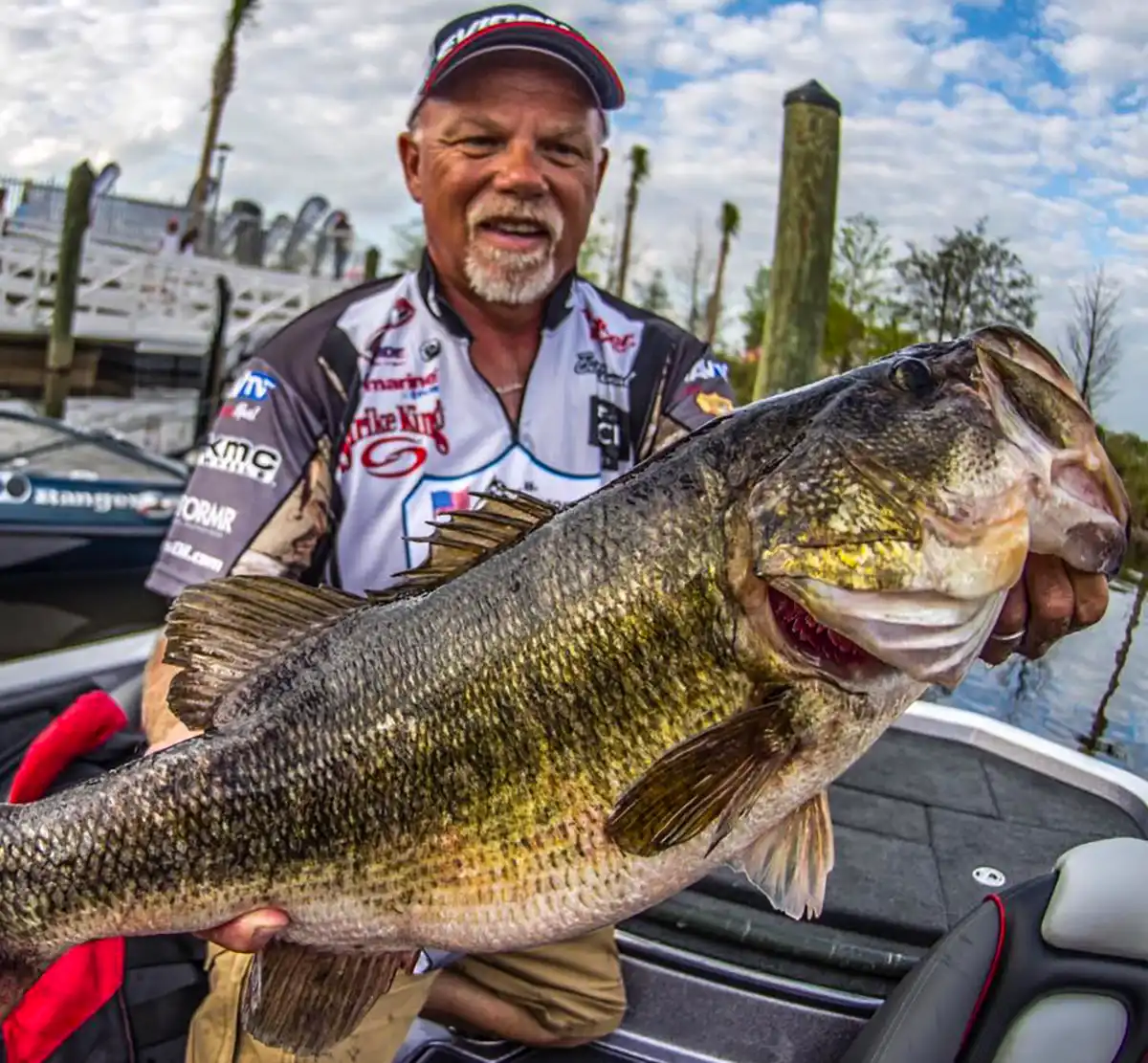
FINAL THOUGHTS ON PRESPAWN STAPLES
“Both of them are dynamite baits whether you’re in grass or you’re on a hard bottom, whether it be rock or a hard clay bottom. You just gotta let the fish tell you what they want.”
“I’ve gone through areas before throwing that Thunder Cricket and not get a bite. Get ready to leave, turn around and come back out and pickup a Red Eye Shad and start burning it through there and get your arm broke on it.”
“In windier conditions, I kind of like the Red Eye shad better personally. But that’s something you’ve just got to experiment with and let the fish tell you what they want.”
“Retrieve wise, there again you’ve got to let them tell you. Do they want it yo-yoed, ripping it off the bottom, or just a steady retrieve and pop it. In the grass of course you definitely want to be ticking that grass the whole time. And as it loads up in that grass, rip it out of there. And that’s usually when you get that strike.”
“I use the reel handle to do more than anything on it. I’ll kind of keep it constant and every once in awhile I’ll just speed the reel handle up or maybe make a fast turn or two with it.”
“I always looked at it like, if you hit grass and you pop it out, that’s when you get bit. And it can be the exact same thing if that fish is just kind of there and you just change that retrieve up a little bit or stop it and let it fall for a minute, you get a bite.”
“Always pay attention to what you’re doing when that fish bites. Cause he’s going to tell you the story and we’ve gotta be smart enough to figure out what he was telling us, instead of being brain dead and going back to what we want to do.”


